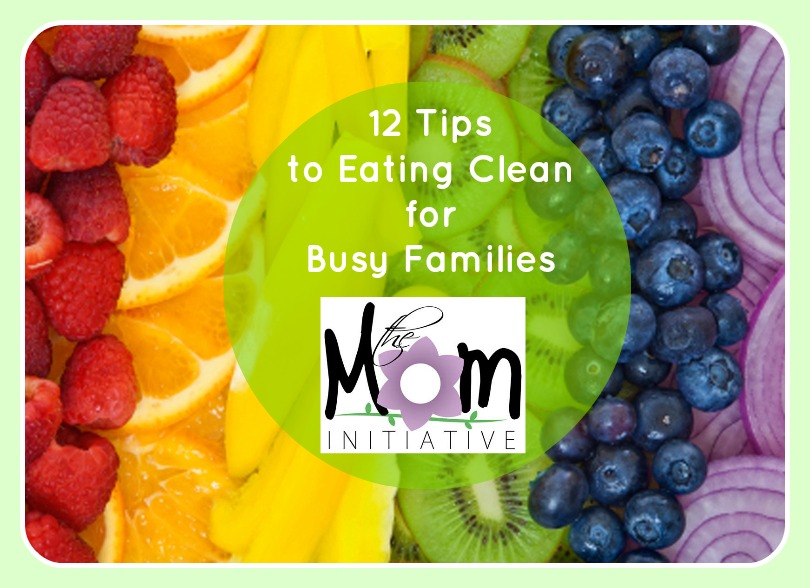The conversations at our dinner table go something like this.
“What is it?” (all three kids are eyeballing the food as if it came from mars and poke it with forks to ensure it is actually dead).
Me: “It’s food. Eat it.”
Elijah: “MOOOM what IS it?”
Me: “It Millet Loaf, created with love.
Cheyenne (She needs to go to Junk Food Anonymous): “Can’t we just have normal food for once?”
Me: “Sure, we can have processed food that fills your arties with plaque, sets you up for cancer and diabetes. No problem. Maybe it will make y’all lethargic and you’ll go to bed sooner!” I reply has I shovel an extra portion onto her plate.
Brace yourselves moms, I have a shocking secret to share with you. Our family is vegan—actually more like Pescatarian. This means we eat a plant based diet, abstaining from meat and animal products except for fish which we eat on a rare occasion.
Now you don’t have to go to that extreme but we made this choice after I felt God leading me to honor my body by doing a Daniel Fast. As I began researching the affects of what we ate, I stumbled on information about diet and special needs children. Our daughter has Pervasive Sensory Disorder with Inattentive Attention Disorder and Aspergers while my son has ADHD with OCD. Research is mixed about whether a gluten-free-casein-free diet helps. For our children, the diet overhaul has shown tremendous improvement in health and behaviors, plus I’ve lost 12 pounds.
Like I said before, you don’t have to go to this extreme but you can create a healthier meals and honor God with your dietary lifestyle without turning into a nonshaving lady 🙂
Here are a few tips we used when we got started trying to figure out how to create a healthier diet.
1. Define what clean eating is for you and your family
For us, it meant not only cutting out all processed foods but also limiting our meat consumption and eating either gluten free or whole wheat grains.
2. Toss pre-packaged foods
Processed Foods are high in fat, salt, sugar, articfical sweetners, preservatives, additives and food dyes. Remove artificial sweeteners, preservatives, additives, and food dyes from your diet. They cause gas, belly fat, slow metabolism, and create a food addiction. If the item has sugar, white flour, artificial sweeteners, white rice, and high fructose corn syrup listed as one of the ingredients–toss it.
3. Special Needs Children
For children with special needs, this will need to be taken one step further by removing gluten and casin from your diet.
“ In a small Danish study in 2010 of children ages 4 to 11, some kids showed significant improvements after 8, 12, and 24 months on a GFCF diet. Researchers at Penn State surveyed the parents of nearly 400 kids with autism and found evidence that a GFCF diet improved symptoms such as hyperactivity, temper tantrums, problems with eye contact and speech skills, and physical ailments such as skin rashes and seizures for certain groups of children. Those who showed the most improvement either followed the diet closely, stayed on it for at least six months, or had a history of food allergies or digestive issues, like chronic constipation and diarrhea.” Parents.com
4. Begin replacing items in your fridge & pantry one at a time
Your tastebuds and your family’s tastebuds are used to the certain flavors and trying to put whole wheat breads or brown rice in front of them is likely to give you a grumble or to. Start with replacing one item at a time or mixing it. I began mixing oat flour and whole wheat flour into our regular flour to help the family’s tastebud’s adjust. We did the same for brown rice. Of course, other items like butter just needs to be replaced with something healthier when it runs out, like Earth Balance butter.
5. Shop on the edge
When grocery shopping, shop on the outside edges of the store. If the food has a label or has its own commercial then it isn’t natural food. This means it is packed with additives. So instead of buying items like “Apple Flavored Pop Tarts” buy a bag of organic apples instead. Rule of thumb for items like cereals, breads etc: If it has more than five ingredients, it isn’t real food.
6. Buy organic items
Because we are on a tight budget, we stick to the rule of avoiding “the dirty dozen” which means we buy certain foods that are certified organic. After doing my homework, I’ve learned an apple can have up to 40 different pesticides under the skin!
For a printable version of what to buy organic and what is okay as non-organic (click here: Organic gorcery list). For an extensive list that you can earmark on your Smart Phone, click here.
7. Shop locally
Farmer’s Markets are an excellent food source, most farmers plant and grow non-GMO items and are organic. Eating items that are home grown aid in reducing allergies, like buying honey which was harvested from bees within a five mile radius of your home. Before purchasing items, ask about the methods used to prevent bugs and such.
8. Research legumes
Chickpeas and blackbeans are an excellent flour replacement. These babies are packed with protein and other nutrition your body needs. They are great for brownies, cookies or putting a new spin on the old American classic of “sloppy joes.” Do your homework and find out how beans can be used and which ones your family likes.
9. Oils
Stick to coconut oil and olive oil for cooking. Highly processed oils, like corn and soy based oils are toxic to your body.
11. Prevent the “Drive Thru” & Processed Snacks
If your family is like mine, you are on the run and life gets even crazier during sports season. Keep items like nuts, organic applesauce, granola bars and sandwhiches on hand. Once a week, I purchase gluten free bread and pre-make sub sammys and unwhiches (the bread is replaced with iceberg or romanie lettuce) for my family. I toss these in the bottom of my fridge with other snacks.
12. Coolers
Keep a cooler on hand and stock it. Whether it’s a lunchbox for school or a cooler for trips, purchase items and then stock it. Simply pack your food the night before and in the morning, you can dump all your food and a couple ice packs into your cooler and go. It takes a bit of discipline to get into the swing of it, but once you do, your clean eating life will be sooooo much easier!
- Ch…ch…ch…CHANGES Are Coming in 2017 for TMI - December 27, 2016
- What New Thing Are You Ready to See God Do in Your Life in 2017? - December 26, 2016
- Heaviness and Newness - December 23, 2016



